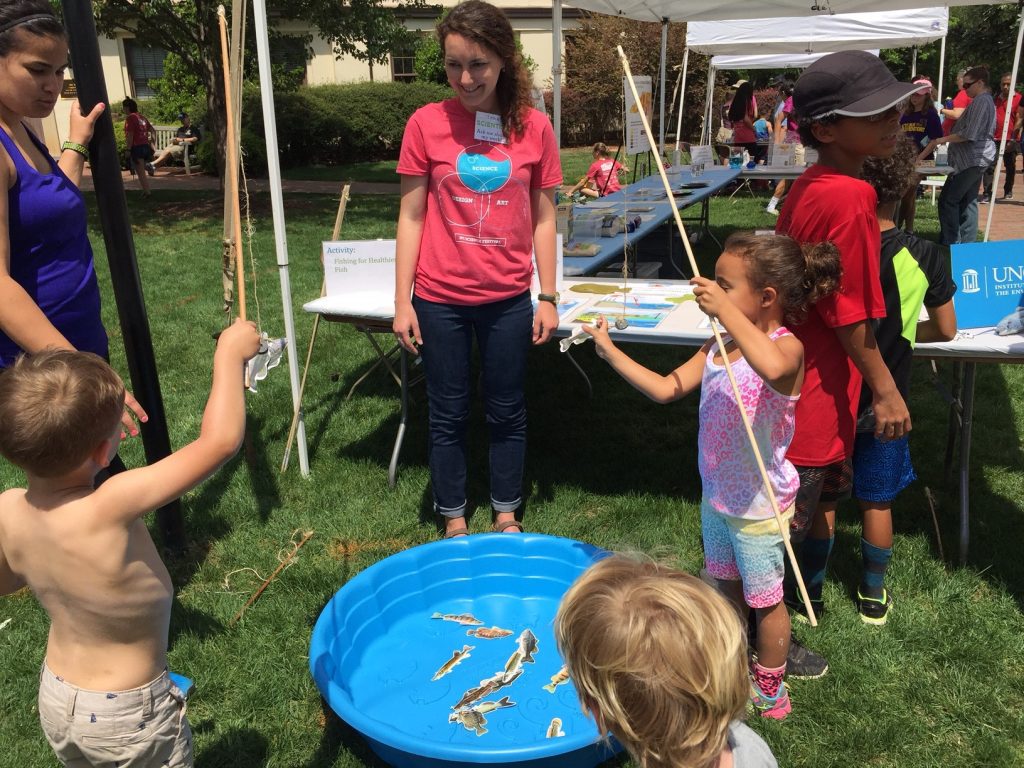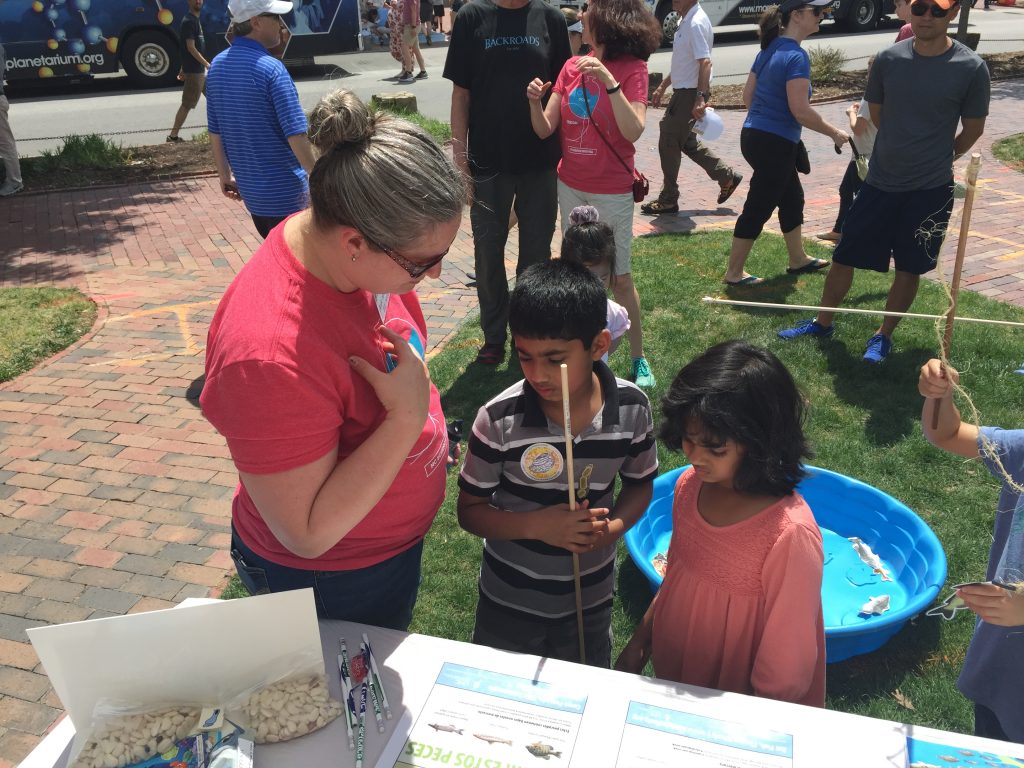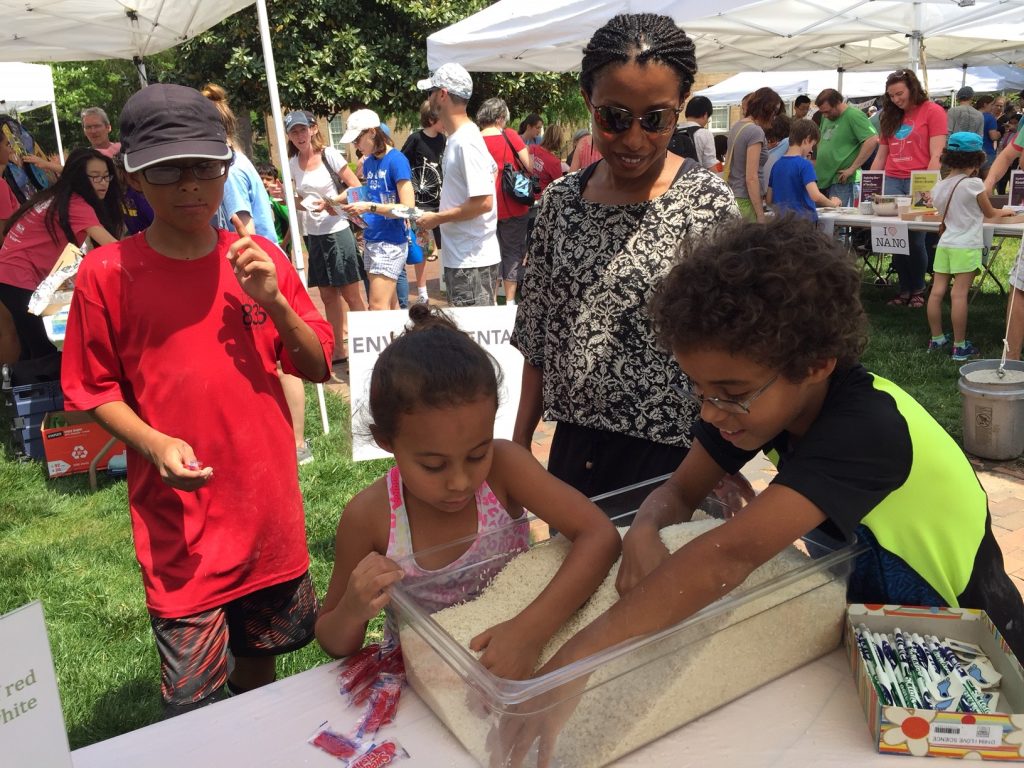IE exhibit teaches community about toxins in food and water
April 27, 2017
UNC’s Institute for the Environment taught children and their parents about environmental toxins in food and water and how to make healthier food choices during Morehead Planetarium and Science Center’s annual UNC Science Expo on Saturday, April 22.
IE’s outreach arm, the Environmental Resource Program (ERP), organized IE’s exhibit. The team created four stations at the expo and led children and adults through the various activities arranged around the theme of environmental toxin education.
“We choose this overall theme because it highlights the work that IE and ERP have done with faculty on campus,” said Grant Parkins, a watershed education coordinator at IE. “Each station and activity was built around research projects that we’re working on with faculty at IE and across campus.”

The first station was an activity where people “fished” for various types of fish species that can be found in lakes in central North Carolina and learned about which fish are safe to eat and which fish contain high levels of mercury and should be avoided. Parkins said that fishing in the kiddie pool was a popular activity among the kids at the event, and parents enjoyed the opportunity to talk with IE staff and learn more about how to keep their kids eating safe.
The second activity dealt with arsenic in rice. When describing the basis behind the station, Parkins said, “Rice grows in areas where arsenic is naturally occurring in the soils, and because rice grows in standing water, it actually takes up arsenic and holds in in parts of the plant, including the grain.” Parkins said that for the activity, a variety of different types of rice were assigned a point value, and the higher the point value the higher the arsenic content. Participants then were asked to combine three rice products that when totaled up, didn’t exceed the recommended weekly number of points.
Parkins said that the third station helped people understand the concept of parts per billion, because one part per billion of arsenic in a water source is enough to make the water dangerous to people. This was targeted at teaching people that well water needs to be tested for arsenic because it cannot be smelled, tasted, or seen in water. The activity was for people to hunt through a massive container of rice for the single grain of red rice, which represented the part per billion or arsenic that is a danger to humans.
The fourth station involved bringing the other three stations together and teaching people about how to build a healthy plate. Two pictures of cooked catfish, one being wild caught and one being farm raised, two pictures of rice, one being white and one being brown, and two pictures of water, one being well and one being municipal tap water, were on a board. Participants had to use their knowledge from previous stations to choose the safest options and make the healthiest plates.
Parkins said his favorite part about the event was that both children and adults enjoyed the stations. “While the kids were having fun participating in the activities, the parents were learning more about how to make healthy choices for their family,” Parkins said. “We at ERP appreciate the opportunity to engage the general public in hands-on research that could affect day-to-day life and that’s why we participate in the Science Expo each year.”


